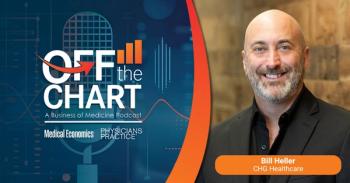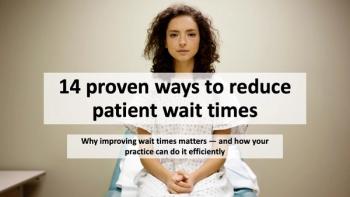
Meeting patients where they are: Rethinking payment flexibility in health care
Health care consumers seek seamless payment experiences that match their digital expectations. Providers must offer flexible options to enhance satisfaction and collections.
Anyone receiving care from a health care provider is more than just a patient—they are an empowered health care consumer. As seen across numerous industries, today’s consumers expect seamless, end-to-end experiences, and health care is no exception. These expectations include flexible, convenient payment options that mirror the ease of use found in other sectors. In fact, multiple McKinsey Consumer Health Insights surveys reveal that health care consumers—regardless of age or background—are eager to integrate the same digital tools and services they already rely on in retail, banking, and travel into their health care experience.
At a time when consumers increasingly are paying for health care out of their own pockets, provider organizations can ill-afford to create confusion and friction in the billing process that will alienate customers and reduce collections. Not only must health care organizations be more transparent about costs of service, but they must also offer payment options that reflect generational preferences – or risk being outpaced by health care providers who offer greater flexibility and a more seamless patient journey.
Diverse patient needs
Health care consumers are a diverse group, spanning multiple generations and socioeconomic backgrounds. These differences are reflected in how (and how much) they use technology for transactions. Pew Research Center
Similarly, in a federal consumer
In addition to providing patients with payment options that meet their needs and preferences, health care organizations must take into consideration other factors that impact their ability to collect payment. There are some patients who lack even basic financial tools like bank accounts, thus sharply limiting their payment options.
Another consideration is propensity to pay, which involves more than just an individual’s credit score. Health care organizations can leverage predictive analytics to more accurately assess what a patient can realistically afford. For example, while one patient may be able to pay a $1,500 bill in full without issue, another may require the option to spread that amount across five monthly payments of $300—because that better aligns with their financial capacity. Tailoring payment options to individual affordability not only supports better patient outcomes but also improves collections and patient satisfaction.
If a provider offers a payment plan, the patient likely will be more willing and able to reimburse that provider over a period of weeks or months. Encouraging convenient and timely payments helps maintain revenue without diminishing the patient experience.
Embedding payment options along the patient journey
Some providers isolate the payment process within a standalone workflow, typically after services have been rendered. However, by integrating payment opportunities at natural touchpoints such as requesting a co-pay at check-in or reminding of a balance due during after-visit summaries, providers can facilitate frictionless payment capture to improve collection rates and patient convenience.
The unpredictable nature of health care costs can impact how patients want to pay. Some might prefer debit cards for known expenses such as copays, but lean toward credit cards for larger or unexpected charges such as deductibles or additional procedures. However, simply accepting card payments is no longer enough to meet patient expectations. Many consumers are using digital wallets as their primary payment method and no longer carry cards with them. And cash hasn’t gone away – some patients continue to rely on it.
Cautionary advice
Provider organizations must strike a careful balance between offering payment flexibility and protecting their financial health. Common pitfalls to avoid include:
- Applying a one-size-fits-all approach to collections
- Neglecting to communicate clearly and early about payment expectations
A one-size-fits-all approach to collections often fails to reflect the diverse needs of patients. Some are able to pay in full, while others require structured payment plans. Offering flexible, personalized options can improve patient satisfaction and still support revenue goals.
Introducing third-party financing can also be effective, but it’s essential to ensure that the partner aligns with your organization’s values and communication approach. Without insight into how they engage with patients, the experience risks becoming disjointed or inconsistent with your standards of care.
Early, transparent communication is equally critical. Setting clear payment expectations before care is delivered—when possible—helps patients plan and reduces confusion or delayed payments. Being upfront about costs, responsibilities, and options makes the billing process feel less confusing and builds trust.
It's essential to recognize that the payment experience is a core component of the overall patient experience. It also often represents the final step in the patient journey for a particular treatment cycle. A negative billing experience can leave a lasting impression—regardless of the clinical outcome—and may ultimately drive patients to seek care elsewhere.
Conclusion
As technology continues to transform health care, provider organizations are encouraged to embrace digital advances that improve patient care and increase operational efficiency. At the same time, they must remain cognizant that not every patient or demographic group is willing or able to embrace the latest technologies and digital payment options. Tech-forward solutions can't always entirely replace legacy options, which is why providers must work to meet patients where they are.
Ryne Natzke is Chief Revenue Officer at TrustCommerce, a Sphere Company.
Newsletter
Optimize your practice with the Physicians Practice newsletter, offering management pearls, leadership tips, and business strategies tailored for practice administrators and physicians of any specialty.








